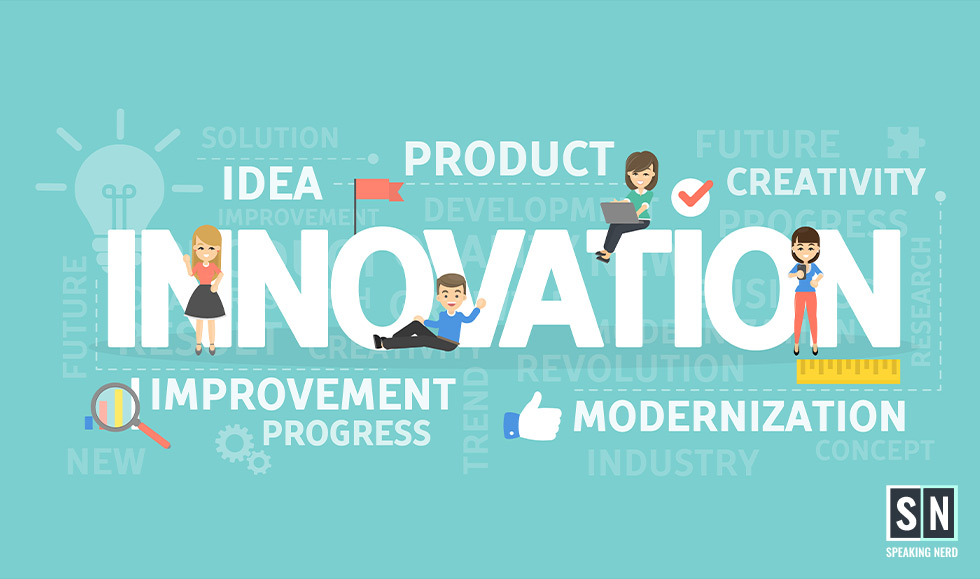Overview
Innovation is creativity grounded in reality. In today's competitive business landscape, entrepreneurs and owners look up to innovation. Modern problems require modern solutions, making business leaders crawl for new ideas to deal with any issues or fallbacks they might be facing.
Table of Content
Innovation can easily be used as a buzzword, but it's imperative to understand the in-depth benefits and the process of innovation management.
Before we get into why you need to introduce innovation in the workplace and its benefits, let's first learn what innovation management is.
What is Innovation Management?

While you may consider innovation and creativity the same, it is not. Creativity may inspire you, but innovation management helps you build on those ideas. Creativity is a prime factor when it comes to innovation.
Creativity may bring forward a solution to a problem, but for it to be helpful, innovation has to play a part. Creativity itself can not produce viable outcomes in problematic situations.
In short: innovation is a service, product, strategy, or business model that is useful and novel. At the same time, innovation management is the system that drives this business discipline and aims to build a repetitive and robust innovative culture and process within a company.
When one thinks of innovation, one may believe it to be a certain kind of breakthrough technology — but it's not necessarily that. It could be something as simple as updating a company's software or adding extra features to a product, packaging, or marketing styles per customer or business needs.
Types of Business Innovation Management
There are two fundamental types of innovation:
Incremental and Architectural Innovation

If an existing business wants to improve its products, services, or technology for its customer base, it will opt for incremental innovation. It helps them improve their products through the use of innovation processes.
Architectural innovation enhances an organization's processes by developing traditional technology into modern ones. It works towards improving its product line for an existing customer base. It's typically pursued by incumbent businesses that want to stay atop their market.
Disruptive and Radical Innovation
Often followed by small businesses to test new waters. They use it to challenge larger companies by innovating to enter a new market. Disruptive Innovation happens when companies enter an existing demand from the bottom and work their way up. Meanwhile, Radical Innovation requires a company to build a new market segment that does not already exist.

In simple words, disruptive innovation could mean that a small business enters an existing market alongside larger competitors and operates to offer customers the products or services they need. On the other hand, radical innovation could also mean that a new business comes up with an original idea or a paradigm shift, with which they solve a market issue that was reached before.
If you want your business to succeed, you must incorporate both. It is as essential to hold your status in the current market space but also to pursue growth. Moreover, it helps a business stay competitive while protecting it from overshadowing competitors.
Importance of Innovation
Inevitably, businesses face unforeseen challenges in a business. And to stay ahead of those problems, you need innovation. Innovation helps you grow your company for the better.
Read on to know why innovation is essential for your business.
Adaptability

As we all know, the recent global pandemic left many businesses ruined. The damage was monumental and almost seen as irreversible. We saw companies rendering routine operations and becoming stagnant one after the other.
While many businesses shut down and faced detrimental side effects of the pandemic, others used innovation to jump back and adapt to the new situation. Using technology for communication and the work-from-home business model helped many businesses stay afloat until they could continue routine business operations.
Growth

As mentioned before, you wouldn’t want your business to stay stagnant. Seeing your business charts go down can’t ever be a good sign. With innovation, you can help a business grow and reach new goals. By conducting a gap analysis you can identify operational areas that require innovation and it’s proper management.
Strategic planning and innovation management can create a more robust business environment, which can lead to more productivity, contributing to economic and organizational growth.
Distinguishment

While the market is full of competitors offering similar products and services, innovation helps you stand out. You can show your customers that you understand their problems and have a solution for them; this separates you from your competitors.
Improves Workplace
Innovation management offers businesses a better workplace. They present ideas and technologies to help the workforce run operations more smoothly.

Let's say a problem is challenging to solve, and it's always better to put your thinking cap on and think of creative ideas that will help in problem-solving.
You can also achieve innovation by design thinking. This is when you strategize against a problem with a human-centric mindset that will help in solutions.
Practically, you can design using existing insights and by observing and doing research on them. By that, you can encourage empathy and target pain points of the market, and produce solutions to address those problems.
Human-centered design has the following characteristics:
- Desirability — for a product or service to be successful, a customer must want it. So to create a specific attraction through innovation to meet their needs.
- Feasibility — your innovation is useless if it does not reach your customers. It would help if you had it to be sure that your innovation has no regulatory, technological, or economic barriers.
- Viability — a desirable and feasible product also needs to be long-lasting. So, you must be able to reproduce and recreate them consistently for them to be viable.
The Four Stages of Innovation

1. Clarification
This is to research to understand the market problem and to sympathize with it. A clear image of the issue makes it easier to solve.
2. Ideate
This helps brainstorm solutions to the problems that came up through the research process. Here you can also work against biases and overcome challenges and produce innovative ideas.
3. Develop
This is where you build on the ideas that you generate. To create a prototype to solve the problem effectively and practically.
4. Implement
This is where you discuss with stakeholders and encourage development adaptation to bring innovation out to the world to solve their problems.
Final Words
Innovation management ensures that innovative ideas are in place and implemented in an organization. Innovation allows a business to explore new market segments open-endedly and to grow as a distinguished organization.


